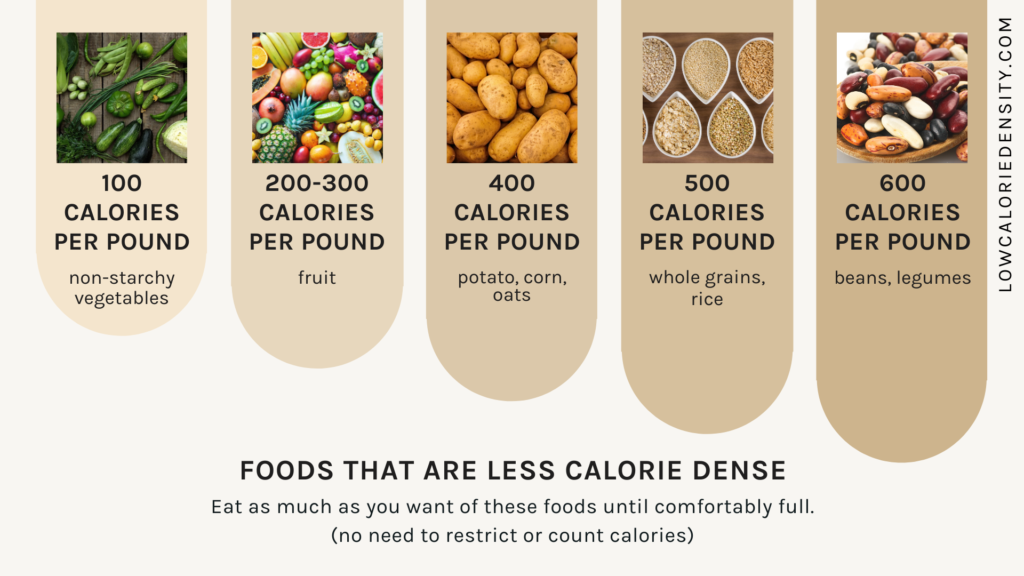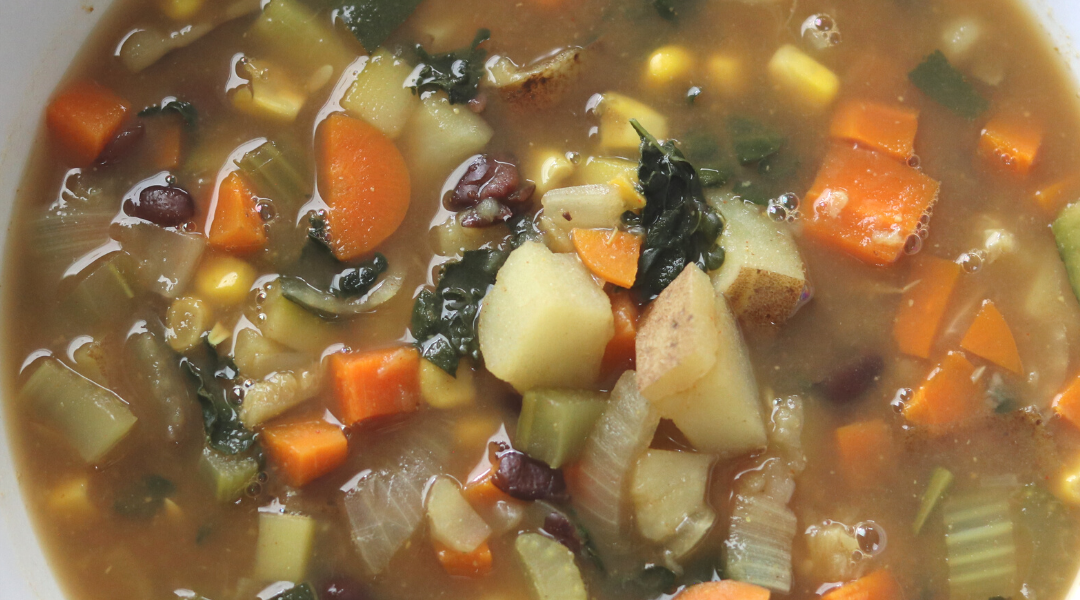What is calorie density?
Calorie density refers to the amount of calories per pound of any particular food. Different types of food have different calorie densities. For example, apples have a calorie density of 237 calories per pound – whereas, dates have a calorie density of 1277 calories per pound. This means if you compare one pound of dates to one pound of apples – there’s a difference in calorie density of 1040 calories.
How does understanding calorie density help me lose weight?
By understanding the different calorie densities of different types of food, you can make simple swaps in your diet that will result in a big difference of your overall daily calorie intake – WITHOUT having to eat LESS FOOD. Many diets focus on eating less food – this leaves you feeling hungry and likely to eventually binge. When you start to include more low calorie density foods each day, you can lose weight while still eating filling meals. This not only helps you to lose weight but be much more likely to keep it off. Eating this way means you can eat a larger (filling) volume of food in order to lose weight because the foods you’re choosing are more ‘diluted’ of their calories.
Which foods are considered low calorie density?
Anything whole plant foods under 700 calories per pound that are full of fiber and water.
Examples: Potatoes, oatmeal, rice, beans, legumes, vegetables, fruit

How quickly will I lose weight?
If you have over 30 pounds to lose, you can expect to lose 1/2-1 pound of fat per week. (this varies per person) If you see 3-4 pounds of weight loss in the first week, it’s likely mostly water weight, so don’t be disappointed if you don’t continue to see such drastic weight loss each week.
Weight loss isn’t a race. I want you to focus on the PROCESS of eating these healthy, filling low calorie density meals and let the OUTCOME take care of itself. If you’re only focused on fitting into your old jeans – it’s unlikely you’ll make lasting changes to maintain the weightloss forever.
I recommend only weighing yourself once per week to track progress. Learn more about this in a podcast episode I recorded, here.










